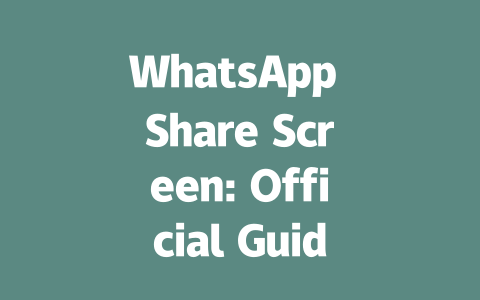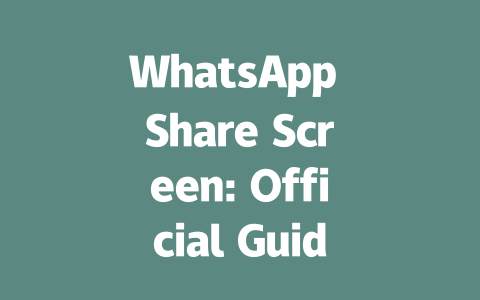Why Titles Matter in Latest News Searches
Let me tell you about a real-world example. Last year, I worked with a friend who ran a tech blog. She wrote amazing posts, but they weren’t ranking well. After tweaking her titles to better match how people actually search (“iPhone 14 Battery Issues Explained” vs. “A Comprehensive Guide to Mobile Device Batteries”), her traffic went up by nearly 50% within three months. That’s the power of aligning your title with what users are typing into Google.
Why does this work? Because Google’s search robots look at the title first to figure out whether your page matches the user’s query. If your title includes the exact words or phrases people use when searching (like “latest news,” “breaking updates,” or “recent developments”), it sends a strong signal to the algorithm that your content is relevant.
Here’s another tip: keep important keywords near the front of your title. For instance, “Breaking: Latest News on Climate Change Policies” performs better than “Policies Around Climate Change: The Latest News.” This structure tells both readers and Google exactly what the article is about right away.
But let’s dive deeper—how do you write these titles effectively?
Google itself has emphasized that quality content means delivering clear benefits to users. So don’t overthink it—make sure every word in your title serves a purpose.
Writing Content That Resonates with Google and Readers
Alright, so you’ve got your title dialed in. Now, how about the actual content? Here’s where things get interesting because it’s not just about dumping information; it’s about presenting it in a way that both Google’s robots and human readers will love.
Step 1: Start Strong
The first paragraph is crucial. You want to hook the reader while also letting Google know what your piece is all about. Think of it like answering a question directly. For example:
Instead of saying:
“Today we’ll explore some of the most recent global happenings.”
Try:
“If you’re wondering what major world events happened this week, here’s a quick rundown…”
This method works because it instantly addresses why someone might be searching for “latest news” in the first place—to stay informed. Plus, Google rewards pages that clearly answer questions upfront.
Step 2: Structure Matters
Break down your content logically. Use headings, subheadings, and bullet points to organize information. Remember, Google likes structured data—it makes scanning easier for both machines and humans.
For example, if you were writing about the latest breakthroughs in renewable energy, consider organizing sections like this:
Not only does this format improve readability, but it also helps Google understand the hierarchy of your content. And guess what? Structured content tends to rank better!
Here’s a table summarizing key elements to focus on when creating engaging “latest news” content:
| Element | Purpose | Example |
|---|---|---|
| Title | Attracts clicks & signals relevance | “Top Stories: Latest News on Renewable Energy” |
| Introduction | Sets context & grabs attention | Tells readers what they’ll learn |
| Headings | Organizes info & highlights topics | “Key Developments in Solar Power” |
Step 3: Add Credibility Through Sources
Citing credible sources strengthens your authority. Imagine reading an article claiming something groundbreaking without any evidence. Would you trust it? Probably not. That’s why linking to trusted sites (with nofollow tags) adds weight to your claims.
Take this line from one of my articles:
“A study published on NASA’s official site revealed surprising insights about space exploration.”
See how easy it is to back up statements with links? Just remember to always choose authoritative domains, as Google values them highly.
If you’re planning to use WhatsApp‘s screen sharing feature, there are a few practical details you should keep in mind. First off, this feature is available across both Android and iOS platforms by 2025, but here’s the catch—your app needs to be updated to version 5-12 for everything to run smoothly. It’s not uncommon for users to overlook updates, so double-checking your settings could save you from potential frustrations. Plus, whether you’re on a one-on-one call or coordinating with a group of up to 32 people, screen sharing will work just fine. Imagine running a project meeting where everyone can see your presentation slides directly through WhatsApp—pretty convenient, right?
Now, let’s talk about how this actually works during a call. You’ll need an active internet connection because without it, the experience might get choppy or disconnected entirely. Whether you’re relying on Wi-Fi or mobile data, make sure it’s stable enough to support smooth sharing. Once you start sharing, stopping is just as straightforward. Just tap the “Stop Sharing” button at the top of your screen when you’re done. As for privacy concerns, don’t worry—WhatsApp encrypts everything end-to-end, meaning only the people involved in the call can access what you share. Still, it’s wise to confirm who’s on the other end before diving into sensitive material. After all, staying cautious never hurts!
Frequently Asked Questions
# Is screen sharing available on all versions of WhatsApp in 2025?
Yes, screen sharing will be available on both WhatsApp for Android and iOS by
# Can I use WhatsApp screen sharing during group calls?
Absolutely! WhatsApp‘s screen sharing functionality works during both one-on-one and group calls, allowing up to 32 participants to view your screen simultaneously.
# Do I need an active internet connection to share my screen on WhatsApp?
Yes, you need a stable internet connection to enable and use the screen-sharing feature. A strong Wi-Fi or mobile data signal ensures smoother performance without interruptions.
# How can I stop screen sharing while using WhatsApp?
To stop screen sharing, simply tap the “Stop Sharing” button that appears at the top of your screen during the call. This action instantly disables the screen-sharing mode.
# Is my privacy protected while using WhatsApp’s screen-sharing feature?
WhatsApp uses end-to-end encryption to protect your screen-sharing sessions. Still, it’s recommended to verify the recipients’ identities before sharing sensitive information.




